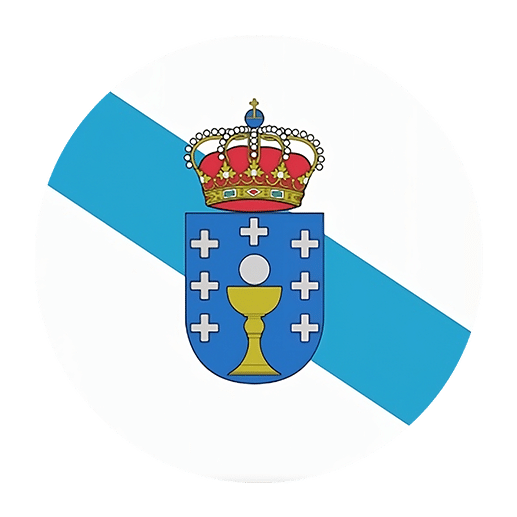Learning a new language can be a rewarding and enriching experience, and delving into its grammar can help you communicate more effectively. If you’re studying Galician, a Romance language spoken primarily in Galicia, Spain, one of the key grammatical concepts you need to master is the use of superlative forms of adjectives. This article will provide a comprehensive guide to understanding and using superlative forms in Galician, enhancing your linguistic proficiency and allowing you to describe the world around you with greater precision and flair.
Understanding Superlatives
Superlatives are used to indicate that something possesses the highest degree of a particular quality within a given context. In English, we form superlatives by adding the suffix “-est” to short adjectives (e.g., “smallest”) or by using the word “most” before longer adjectives (e.g., “most beautiful”). In Galician, the process is somewhat similar but involves its own unique rules and structures.
Forming Superlatives in Galician
There are two primary ways to form superlatives in Galician:
1. Using “o máis” or “a máis” (the most)
In Galician, the words “o máis” (masculine) and “a máis” (feminine) are used in front of the adjective to indicate the superlative form. This is akin to the English “the most.”
Examples:
– “O máis alto” (the tallest, masculine)
– “A máis alta” (the tallest, feminine)
– “O máis interesante” (the most interesting, masculine)
– “A máis interesante” (the most interesting, feminine)
Notice that the gender of “o” or “a” must agree with the noun being described.
2. Using Suffixes
For some adjectives, you can form the superlative by adding the suffix “-ísimo” for masculine nouns or “-ísima” for feminine nouns. This is similar to the English “-est” but is less commonly used than “o máis” or “a máis.”
Examples:
– “Altísimo” (very tall, masculine)
– “Altísima” (very tall, feminine)
– “Interessantísimo” (very interesting, masculine)
– “Interessantísima” (very interesting, feminine)
In these cases, the superlative form is often used to express an extreme degree of the adjective, similar to saying “very” or “extremely” in English.
Irregular Superlatives
Just as in English, some adjectives in Galician have irregular superlative forms. It’s essential to memorize these irregular forms since they do not follow the standard rules of superlative formation.
Examples:
– “Bo” (good) becomes “o mellor” (the best, masculine) or “a mellor” (the best, feminine)
– “Malo” (bad) becomes “o peor” (the worst, masculine) or “a peor” (the worst, feminine)
– “Grande” (big) becomes “o maior” (the biggest, masculine) or “a maior” (the biggest, feminine)
– “Pequeno” (small) becomes “o menor” (the smallest, masculine) or “a menor” (the smallest, feminine)
Note the change in the root of the adjective in these irregular forms.
Contextual Usage of Superlatives
To use superlatives effectively in Galician, you need to understand the context in which they are used. Here are some practical applications:
1. Comparing Items or People
When comparing two or more items or people, superlatives help you highlight the one that stands out the most.
Example:
– “Ela é a máis intelixente da clase.” (She is the smartest in the class.)
2. Describing Extremes
Superlatives are also useful for describing extremes, whether it’s the highest mountain, the fastest runner, or the most delicious dish.
Example:
– “Esta é a montaña máis alta de Galicia.” (This is the highest mountain in Galicia.)
3. Expressing Preferences
When expressing preferences, superlatives can help you convey your choices more effectively.
Example:
– “Esta é a miña canción favorita, é a máis fermosa.” (This is my favorite song, it is the most beautiful.)
Practice and Reinforcement
Like any aspect of language learning, mastering superlatives in Galician requires practice. Here are some tips to help you reinforce your understanding and usage:
1. Engage in Conversations
Practice using superlatives in conversations with native speakers or fellow learners. This real-life application will help you become more comfortable and confident.
2. Create Sentences
Write sentences using superlatives to describe various aspects of your life, such as your favorite foods, places, or activities. This exercise will help you internalize the structures.
Example:
– “A miña cidade favorita é Santiago de Compostela, é a máis fermosa.” (My favorite city is Santiago de Compostela, it is the most beautiful.)
3. Read and Listen
Immerse yourself in Galician literature, music, and media. Pay attention to how superlatives are used in different contexts and try to incorporate similar structures into your speech and writing.
Example:
– Listen to a Galician podcast and note down any superlative forms you hear. Try to use them in your own sentences.
4. Use Language Learning Apps
Many language learning apps and online resources offer exercises and quizzes on superlatives. These can provide structured practice and immediate feedback.
Example:
– Use apps like Duolingo or Memrise, which offer specific modules on adjectives and their forms, including superlatives.
Common Mistakes and How to Avoid Them
As you practice using superlatives in Galician, be mindful of some common mistakes that learners often make:
1. Gender Agreement
Ensure that the gender of “o” or “a” matches the noun being described.
Incorrect: “O máis alta.”
Correct: “A máis alta.” (when referring to a feminine noun)
2. Overusing “ísimo/ísima”
While the “-ísimo/ísima” suffix is useful, it can sound unnatural if overused. Reserve it for expressing extreme degrees.
Incorrect: “Ela é altísima na súa clase.”
Correct: “Ela é a máis alta na súa clase.” (She is the tallest in her class.)
3. Irregular Forms
Pay attention to irregular forms and practice them regularly to avoid defaulting to regular patterns.
Incorrect: “O máis bo.”
Correct: “O mellor.” (the best, masculine)
Conclusion
Mastering the superlative forms of adjectives in Galician is an essential step in becoming proficient in the language. By understanding the rules, practicing regularly, and being mindful of common mistakes, you can effectively use superlatives to describe the world around you. Remember, language learning is a journey, and each step you take brings you closer to fluency. So, embrace the challenge, practice with enthusiasm, and enjoy the richness that Galician has to offer. Boa sorte! (Good luck!)

